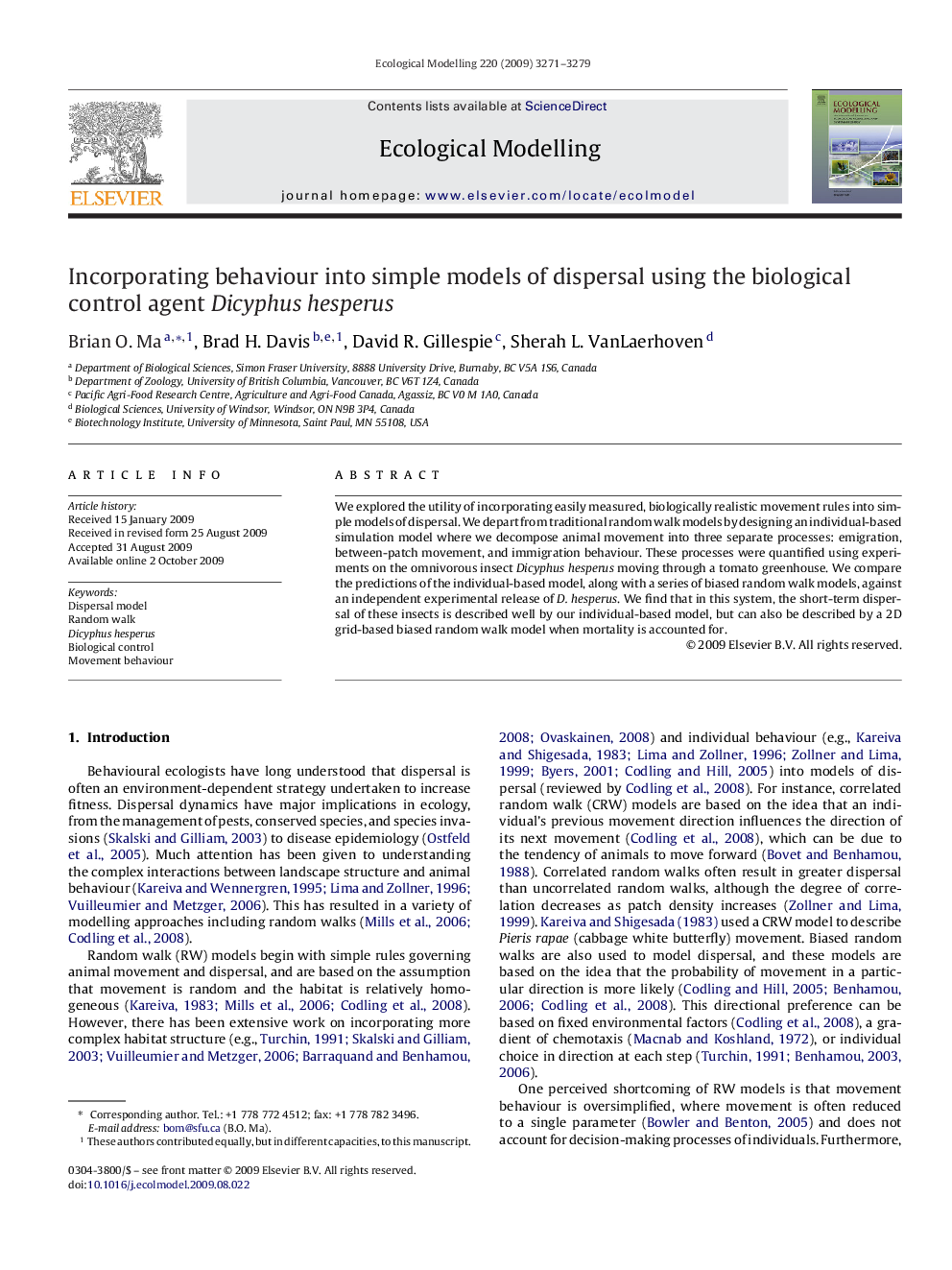| کد مقاله | کد نشریه | سال انتشار | مقاله انگلیسی | نسخه تمام متن |
|---|---|---|---|---|
| 4377569 | 1303435 | 2009 | 9 صفحه PDF | دانلود رایگان |

We explored the utility of incorporating easily measured, biologically realistic movement rules into simple models of dispersal. We depart from traditional random walk models by designing an individual-based simulation model where we decompose animal movement into three separate processes: emigration, between-patch movement, and immigration behaviour. These processes were quantified using experiments on the omnivorous insect Dicyphus hesperus moving through a tomato greenhouse. We compare the predictions of the individual-based model, along with a series of biased random walk models, against an independent experimental release of D. hesperus. We find that in this system, the short-term dispersal of these insects is described well by our individual-based model, but can also be described by a 2D grid-based biased random walk model when mortality is accounted for.
Journal: Ecological Modelling - Volume 220, Issue 23, 10 December 2009, Pages 3271–3279